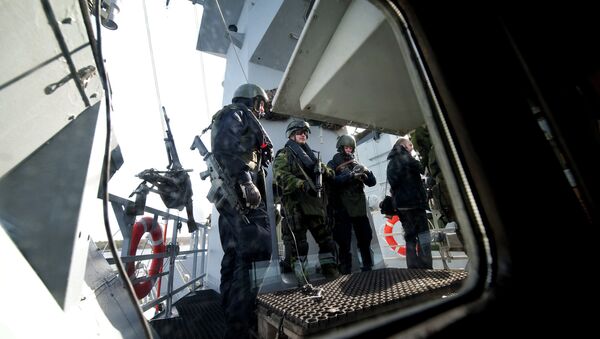During the ongoing security conference Society and Defence in Sälen, Defence Minister Peter Hultqvist has presented a major defence budget hike, supported by the government parties, the Social Democrats and the Greens, as well as their sidekicks the Centre Party and the Liberals.
Hultqvist stressed that defence allotments have already increased several times since May 2015. This autumn's defence settlement is intended to raise the defence budget by SEK 25 billion ($2.7 billion), or 40 percent.
“You have to go back to the beginning of the 1950s to see something similar,” Hultqvist said, as quoted by the Finnish national broadcaster Yle. “SEK 25 billion is a uniquely large amount of money. We take the security policy situation extremely seriously,” Hultqvist stressed.
Hultqvist also backed the Defence Committee's proposal to expand the draft and open a score of new squadrons and regiments. These include, for instance, a new amphibious regiment in Gothenburg, a ranger regiment in Arvidsjaur and a new squadron in Uppsala.
“It is reasonable to give notice on these points. Eight thousand conscripts, a larger army, a regiment in Arvidsjaur, reinforcements on Gotland, conscripts training on Gotland and a stronger defence of the capital region,” Hultqvist explained to Swedish Radio.
According to Hultqvist, the security policy situation in northern Europe has “deteriorated over time”, to the point where “an armed attack or the use of military force against Sweden” cannot be excluded.
“We are living in a time of rapid change. Focus is shifting rapidly and we see strong political tensions throughout the Western world,” Hultqvist said, as quoted by national broadcaster SVT, citing “an increased unpredictability” and “constant conscious attempts to influence and undermine democratic structures”.
Hultqvist also cited Russia's nuclear forces readiness exercise held last October as an example of an increasingly insecure environment around Sweden.
“It is a powerful security policy signal from the Russian side”, Hultqvist said, stressed that Sweden will work against nuclear arms in its absolute proximity.
Still, Hultqvist concluded that Sweden's defence capability is stronger than it was five years ago, stressing that more soldiers are being trained once the draft was re-introduced.
Following the end of the Cold War in the late 1980s and early 1990s, the Swedish Armed Forces gradually reformed from being a bulky force designed to handle an invasion to one focused on international efforts. This has been mirrored in both the extent of the budget (from 2.4 percent of its GDP in 1990 to 1 percent in 2018) and the number of troops (from 180,000 in the 1980s to some 20,000 today). Furthermore, since 1990 the number of warships and fighter aircraft has been reduced by 70 percent, while the number of actual war units in the army has been reduced by 90 percent over the past 30 years. Among others, this led former Supreme Commander Sverker Göransson to suggest that Sweden can be defended for a week at best.
Despite Sweden's non-aligned status, its military units have participated in a number of international operations, such as in Afghanistan, Kosovo and Iraq.




